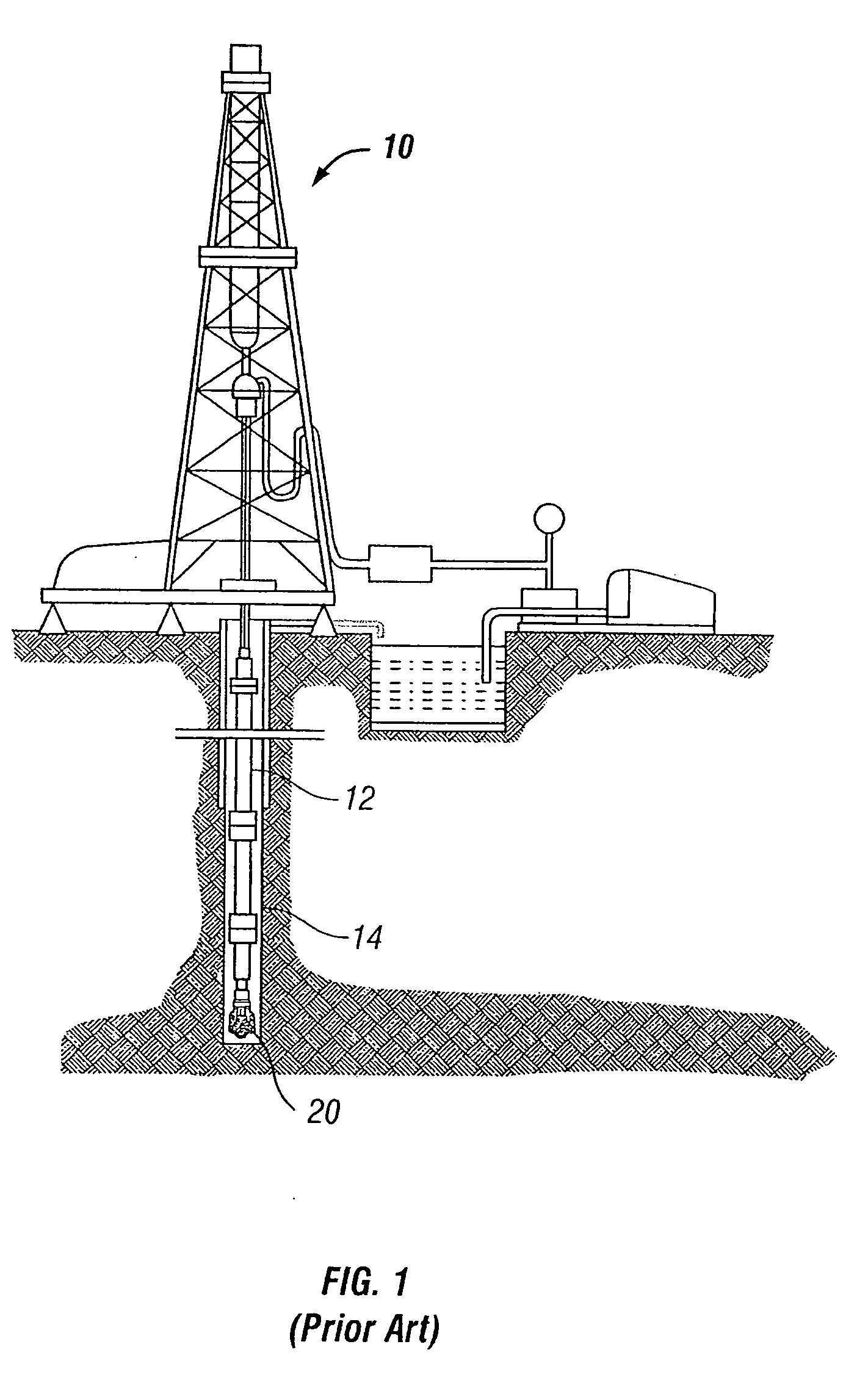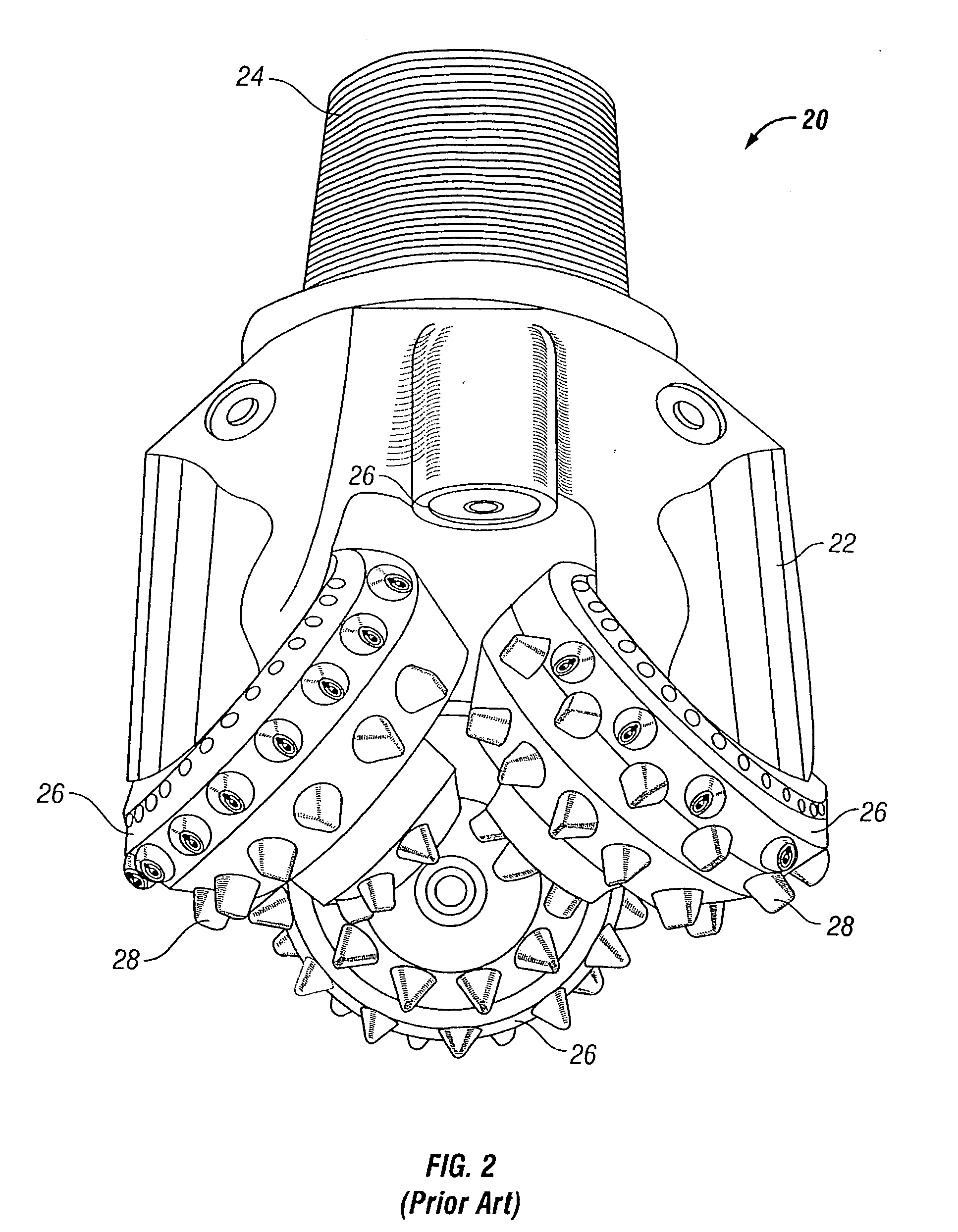Radial force distributions in rock bits
a technology rock bits, which is applied in the field of radial force distribution in rock bits, can solve the problems of rock bits gyrating or laterally bouncing about the bottom hole, impacting the wall, and significant expense in the design and manufacture of drill bits, so as to reduce the efficiency of drill bit performance and reduce the life of drill bits
- Summary
- Abstract
- Description
- Claims
- Application Information
AI Technical Summary
Benefits of technology
Problems solved by technology
Method used
Image
Examples
Embodiment Construction
[0063] Another example of a method of designing a bit in accordance with an embodiment of the present invention will now be described with respect to FIGS. 9A-9C, 10A-10C, and 11A-11C. These figures show examples of resultant radial force output obtained from a simulation. The bit design is improved through several iterations, in accordance with the present invention. In this example, a simulation as described in U.S. Pat. No. 6,516,293, issued on [INSERT Date.] entitled, "Methods for Simulating Drilling of Roller Cone Bits and its Application to Roller Cone Bit Design and Performance" is used to obtain resultant radial forces as briefly described below with reference to FIG. 12.
[0064] Initially, parameters for the simulation are selected (Step 1200), which define the initial bit design, and the simulation begins by rotating the defined bit (Step 1202) to determine a new location of the cutting elements located on the bit (Step 1204). Interferences between the cutting elements and t...
PUM
 Login to View More
Login to View More Abstract
Description
Claims
Application Information
 Login to View More
Login to View More - R&D
- Intellectual Property
- Life Sciences
- Materials
- Tech Scout
- Unparalleled Data Quality
- Higher Quality Content
- 60% Fewer Hallucinations
Browse by: Latest US Patents, China's latest patents, Technical Efficacy Thesaurus, Application Domain, Technology Topic, Popular Technical Reports.
© 2025 PatSnap. All rights reserved.Legal|Privacy policy|Modern Slavery Act Transparency Statement|Sitemap|About US| Contact US: help@patsnap.com



